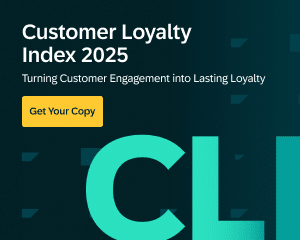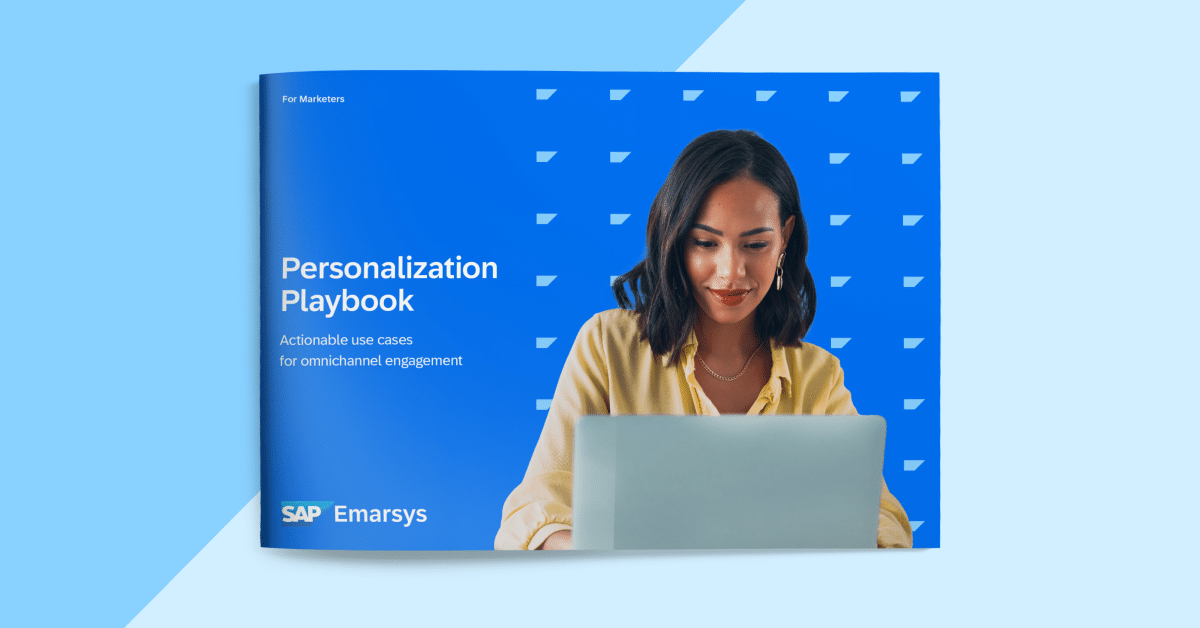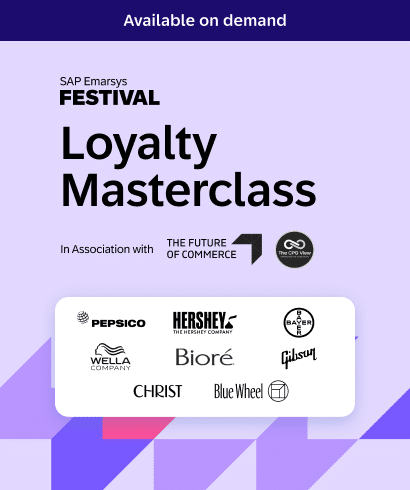Customer acquisition is tougher than ever. Costs are climbing, competition is fierce, and previously high-performing campaigns aren’t delivering like they used to. You can spend more, try more, push harder, and still feel like the results fall short.
But what if getting new customers didn’t have to feel like a gamble?
With the right data, you can see who your best prospects are, understand what motivates them, and reach them at the exact moment they’re ready to act. In this article, we’ll share six data-driven strategies, backed with examples from real brands, that take the guesswork out of acquisition and bring in customers who stick around.
1. Automate Trigger-Based Campaigns to Capture Intent
When a prospect browses your website, abandons their cart, or signs up for updates, they’re showing you clear buying signals. Acting on those signals in the moment can mean the difference between a new customer and a lost opportunity.
That’s where trigger-based campaigns come into play.
Trigger-based campaigns use real-time behavioral data to reach prospects when interest is highest. Instead of sending generic follow-ups, you can deliver personalized messages that acknowledge their specific action, whether that’s a reminder about an item they viewed, a special offer for completing a purchase, or helpful content that builds confidence in their decision.
Once the foundational triggers like abandoned cart and welcome journeys are in place, the next step is to focus on more niche triggers that drive value down the funnel:
- Predicted churn risk: Engage when early signs of disengagement appear, such as lower open rates or reduced purchase frequency.
- Category affinity: Tailor campaigns around the product categories a prospect shows strong interest in.
- Price sensitivity: Trigger personalized offers for prospects flagged as discount-driven, ensuring incentives are only used where necessary.
- Back-in-stock or price-drop alerts: Reconnect prospects with products they’ve previously viewed or saved.
- Lifecycle milestones: Deliver timely experiences tied to lifecycle stage, from VIP welcomes to reactivation pushes.
- Cross-channel engagement: Use strong engagement in one channel (e.g., email) as a signal to introduce another, like SMS or app.
- Predictive replenishment: Anticipate when a repeat-purchase product is running low and trigger a reminder or offer.
- High-intent signals: Act when multiple behaviors stack up: Repeat visits, long time-on-page, multiple product views, suggesting readiness to convert.
Emarsys in action: Replacements, Ltd., the world’s largest retailer of tableware, replaced batch-and-blast emails with automated browse and cart abandonment journeys. The result was a 67% increase in lead-to-first-time-buyer conversions, a 32% lift in average order value, and an 18% rise in repeat purchases. By using automation to respond to customer intent in real time, they turned casual browsers into paying customers faster and more efficiently.
2. Use AI to Power Lifecycle Acquisition Journeys
Acquisition doesn’t happen in a single step. Prospects move through a series of interactions before they become customers, and each moment is an opportunity to build relevance and trust. The challenge is delivering the right message at the right time, especially when your audience is large and diverse.
AI makes this scalable. By analysing customer data in real time, AI can identify where a prospect is in their journey and trigger personalized campaigns that guide them toward conversion. This could be a welcome series for new subscribers, a tailored birthday offer, or a follow-up after a first purchase to encourage the next one.
Emarsys in action: Nike HK launched 10 new lifecycle campaigns, including welcome, birthday, and abandoned cart journeys, powered by SAP Emarsys AI. Within months, they saw a 110% uplift in campaign conversions, an 8% increase in purchase rates, and a 32.5% rise in site visits. By orchestrating these touchpoints automatically, Nike HK kept prospects engaged from first interaction to first purchase.
3. Integrate First-Party Data Capture into Acquisition Campaigns
With third-party cookies on the way out, first-party data has become the most reliable foundation of effective customer acquisition. Collecting this data through your own channels, like website, email, events, or in-store, gives you accurate, permission-based insights you can build on with confidence.
When first-party data is at the heart of your acquisition campaigns, every interaction is shaped by real customer behavior, rather than assumptions. That means sharper targeting, more relevant personalization, and peace of mind when it comes to privacy compliance.
Emarsys in action: AO, a leading online electricals retailer, used SAP Emarsys to capture first-party data via its website and web channel interactions. By combining this data with automated campaigns, AO grew its opt-in database by 14%, increased newsletter engagement by 150%, and drove 45% of revenue from automation. This solid data foundation allowed AO to reach prospects with relevant offers from their very first interaction.
4. Test and Optimize Channel Mix Based on Performance Data
Every audience member is different, and not every channel will produce the same results. Not every acquisition channel will perform the same for your audience. Paid search might bring high traffic but low conversion, while email or SMS might convert fewer prospects but at a much higher rate. The key is to continually test, measure, and reallocate resources based on what the data tells you.
A data-driven channel mix starts with tracking the full customer journey across every touchpoint. This allows you to see which channels are driving not just clicks, but high-quality customers who convert and stay. From there, you can optimise spend, double down on top performers, and refine underperforming channels.
Emarsys in action: AO’s marketing team uses Emarsys performance reporting to monitor acquisition channels in real time. By identifying which sources delivered the highest-quality sign-ups, they could adjust campaigns on the fly, improving both conversion rates and cost efficiency. This agile, insight-led approach keeps acquisition budgets focused where they make the biggest impact.
5. Leverage Predictive Analytics to Prioritize High-Value Prospects
Not every lead brings the same potential. Some are far more likely to convert, spend more, and remain loyal over time. Predictive analytics helps you spot these different segments early by analyzing historical and behavioral data, so you can focus your acquisition efforts where they will deliver the greatest return.
By scoring leads based on their likelihood to purchase, predictive models help marketers decide who to target, what to offer, and when to engage. The value of this goes far beyond mere efficiency. With predictive analytics, you can:
- Direct ad spend toward high-value audiences, reducing wasted budget on low-propensity leads.
- Shape tiered nurturing journeys that match investment to potential, giving high-value prospects a more personalized experience.
- Inform offer strategy, reserving discounts or premium incentives for leads where ROI justifies the cost.
- Prioritize channels, using high-touch methods like sales calls or direct mail for top prospects, while engaging lower-value leads through scalable digital channels.
- Equip sales teams with predictive scores in CRM, so outreach is focused on the right leads at the right time.
Instead of chasing volume, predictive analytics allows marketers to build acquisition strategies around customers with the highest potential lifetime value. The result is smarter budget allocation, more effective engagement, and faster time-to-first purchase.
6. Align Acquisition Messaging with Retention Insights
Acquisition and retention are often treated as separate disciplines, but the most successful brands know they are deeply connected. Retention data reveals which customers stay the longest, spend the most, and engage most frequently, and that information is invaluable for shaping acquisition campaigns.
By analysing purchase patterns, engagement behavior, and product preferences among your best customers, you can refine acquisition targeting to attract more prospects who fit the same profile. This ensures you’re not just bringing in new customers, but the right customers.
Emarsys in action: Replacements, Ltd. applies insights from its most loyal customers to inform targeting for its acquisition campaigns. This means prospecting audiences are built to mirror the behaviours and interests of their highest-value buyers. The result is a steady flow of new customers who are more likely to convert quickly and remain engaged over time.
Turn Data into Conversations Your Customers Want to Have
Ready to see how leading brands are using personalization to convert high-value prospects into loyal customers? Get your copy of the personalization playbook now and discover actionable, omnichannel strategies you can steal to drive engagement.









